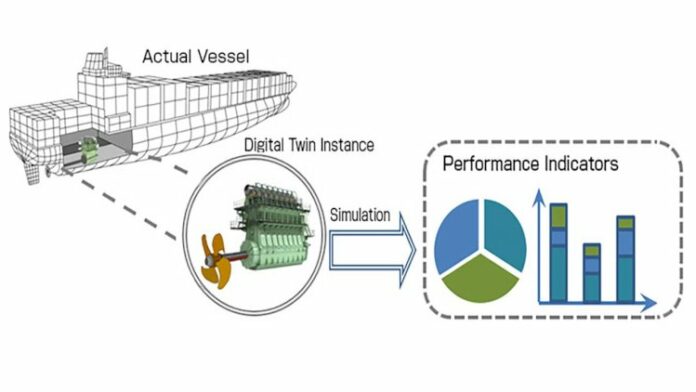Mitsui O.S.K. Lines, Ltd. has signed a contract with the National Institute of Maritime, Port and Aviation Technology (MPAT), National Maritime Research Institute (NMRI); on joint research related to a digital twin model development of vessels' main engine.
In this research, MOL and NMRI agreed to jointly develop and verify the digital twin model (Note 1) of two-cycle main diesel engine by using operational data collected from MOL-operated vessels in service, with the goal of enabling visualization of the main engine's operational status.
The research aims to create a visual twin model that would identify and quantify the status of the main engine (amount of scavenging air, exhaust gas heat, etc.), which is difficult to grasp during ship operation and to increase the accuracy of estimates for the engine's operating state and degree of degradation over time. The project contributes to the establishment of Condition Based Maintenance (CBM) (Note 2) while improving the accuracy of diagnosis technology for the engine failure state. Furthermore, it provides observers to more accurately grasp the main engine's performance during its transient state in adverse weather conditions, leading to optimal and safe engine operation, such as prevention of torque-rich (Note 3) conditions and suppression of torque variation.
MOL has moved ahead with advanced support of safe operation and reduction of its environmental impact, as set out in the "ISHIN NEXT – MOL SMART SHIP PROJECT -," which started in November 2016, and aims to become customers' first choice as a logistics partner by applying ICT technology to improve service quality and efficiency.
Note 1. Digital twin technology-A method to digitally reproduce events in the physical world in real-time. It establishes a simulation space on the system like twin and is used for optimization and engine operating state monitoring and its failure sign diagnosis through design changes and individual customization.
Note 2. Condition Based Maintenance (CBM)-In contrast to conventional Time-Based Maintenance (TMB), which specifies maintenance at a specific time interval, CBM is designed to pinpoint the need for maintenance of devices and components based on precise monitoring and analysis of their operation and performance.
Note 3. Torque rich-A phenomenon that causes a slowdown in main engine speed and engine overload, due to factors such as hull fouling and engine contamination or damage.



